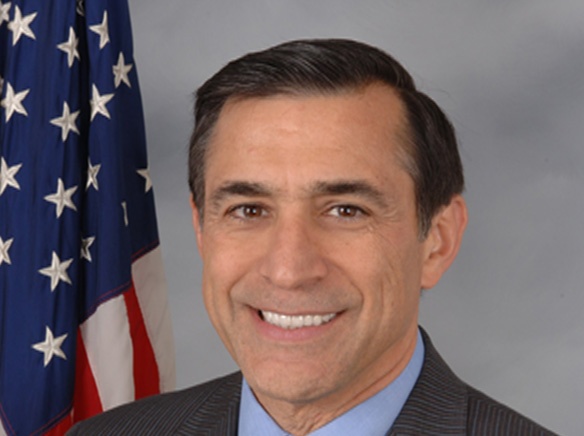Alpine Fire Marshal Jason McBroom chuckled at the podium during his Oct. 20 presentation on the history of fires in Alpine.
“I can rebuild a home, I can’t rebuild people,” McBroom said, telling about 25 people the primary reason he was there was to share information that could prevent future loss of life.
In an event hosted by the Alpine Historical Society at the town hall building, McBroom provided a map with an overlay of fires that occurred in the Alpine area from 1912-1950. He explained that records prior to that era are unreliable, but mid-century records are effective for defining a general area which appears to be commonly struck by fires. Peutz Valley in particular repeatedly turned up as an area of concern.
Moving on to post-1950s era fires, McBroom pointed out data that can be gleaned from modern compiled information: the fires share similar start dates and sometimes strike the same areas several years apart. The fire marshal pointed out that some fires share a name specifically because they have the same point of origination, such as the Viejas fire of 1953 and the Viejas fire of 2001, noting that if a fire begins in the same location more than once, it likely holds clues as to what triggers those fires in the first place.
“We keep this information so we understand how fuel burns. We’re taking lessons like this … we model it and we learn from it,” McBroom said.
Although tragedies such as the Peutz Valley fire of 1956 predated many of the attendees’ residence in Alpine, McBroom asked who in the room remembered each fire that he discussed and as he moved through the years, residents began to murmur with triggered memories.
McBroom said the concept of fire season is outdated and said oft-mentioned Santa Ana winds are less an indicator for possible fires and more of a factor in how long it takes firefighters to defeat a spreading blaze. McBroom explained that a wind-driven fire is often easier to quash because trained firefighters can predict its direction, describing its aggressive spread in one direction as sort of a blowtorch. McBroom said that while fire can travel quickly with wind, the blowtorch fires reveal their path early on in a fight, unlike fires that create what he calls fingers, spreading outward until firefighters are forced to combat multiple fronts.
He implored residents to create defensible space and maintain it year-round, clarifying that he is not opposed to vegetation but asks that homeowners make time to harden their homes and yards.
“I’m not saying remove all your trees, I’m saying improve them… I’m your advocate for Alpine. Want me to walk your home with you? I’d be honored to do so,” McBroom said.
He followed up his offer by referring to the Wildland-Urban Interface Codes that governs new home construction, and urged residents to look toward newer structures for indicators of possible fixes on older homes such as changing out older roof shingles to non-combustible options and resurfacing wood exteriors. The fire marshal informed the crowd that he repeatedly sees homes burnt to the ground from fires that originated in air ducts and encouraged residents to replace older vents with ember-resistant points of entry.
McBroom told the cautionary tale of homeowners who believe that the fire department has the power to save most homes, again referencing the map to express the magnitude of recent fires to audience members.
“When you have a fire over a half a million acres, you’re not going to have a fire engine in every driveway,” McBroom said.
With the explanation that residents will see two different warnings come from the Sheriff in times of fire— evacuation warnings that indicate residents should pack up their belongings, and evacuation orders that ask residents to leave the area immediately— McBroom emphasized how dire the secondary evacuation orders are and beseeched residents to heed those orders upon receipt.
“Trying to evacuate 16,000 residents all at once— it’s not going to happen, it’s going to take hours,” McBroom said.
He let residents know that maps were available at the rear of the room for them to take home and later plot out the recommended four evacuation routes for their households according to what he calls PACE: a primary escape route, an alternate escape route, a contingency plan, and an emergency route.
With residents chiming in with memories of past evacuations, McBroom suggested residents in fire prone areas maintain at least a half a tank of gas in their car at all times, reminding the crowd that gas stations close in times of emergency. Several residents piped up with memories of evacuations where they could not access cash with local ATMs cut off from service, that cellular phones could not be charged to contact concerned friends and family, that pet carriers were not easily accessible and that prescription medications had to be located.
McBroom joked with the crowd and compared parents trying to pick their children up from school during an evacuation as behaving like zombies, driving through brush and creeks in an attempt to pick up their little ones but ultimately ending up stuck in tough situations that sometimes required a rescue.
Taking a more serious tone, he said he has a close connection with local school officials and feels that he has an established working situation with law enforcement but wants to work with residents to create a similar sense of easy communication.
“We are Alpine strong because of the community members here,” McBroom said.
The fire marshal closed his presentation by encouraging attendees to pass information along to a few neighbors, saying that if residents take the time to meet their neighbors and keep moving information along, the entire area will benefit and be better equipped to fight inevitable fires any time of year.














